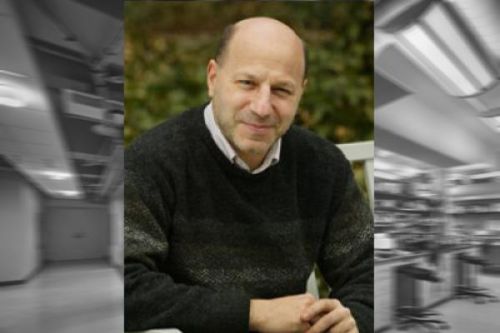
On Friday, May 27th, Professor Howard Stone presented "Surprising responses in flows in common geometrics: (i) Surface-attached bacteria, biofilms and flow and (ii) Trapping of bubbles in stagnation point flows" as part of the Stanford S. and Beverley P. Penner Distinguished Lecture i the Department of Mechanical and Aerospace Engineering at UC San Diego.
Professor Stanford S. (“Sol”) Penner is the founding Chair of the Department of Aerospace and Mechanical Engineering Sciences (AMES) at the University of California, San Diego in 1964. He also served as Director of the Institute for Pure and Applied Physical Sciences (IPAPS), 1968–1971, Vice-Chancellor for Academic Affairs, 1968–1969, and founding Director of the UCSD Center for Energy Research, 1974–1988. He was founding Editor of both the Journal of Quantitative Spectroscopy and Radiative Transfer and Energy (The International Journal). He has served as advisor to the U.S. President’s Office of Science and Technology Policy and the U.S. Department of Energy.
Penner's early research dealt with scientific replacement of empirical methods used for radiative heat transfer estimates in combustion and other systems by showing how to use fundamental spectroscopic parameters, many of which were measured in his laboratory. This work is cited in connection with 3 awards from the American Institute for Aeronautics and Astronautics and in the award of an honorary doctorate from the Technische Hochschule Aachen, etc. His other research dealt with combustion phenomena in aerospace propulsion as exemplified by the book "Chemistry Problems in Jet Propulsion” and numerous related publications during the long time he served as a member of the NATO Advisory Group for Aeronautical Research and Development. Following an around-the-world sabbatical as a Guggenheim Fellow in 1971-72, he founded the UCSD Energy Center and served as its director for more than 25 years while searching for new fossil-fuel, nuclear, renewable and other energy sources, and working especially on technologies for energy conservation.
He is the author of more than three hundred journal articles and seven books. He has received numerous professional honors, including election to the National Academy of Engineering, the American Academy of Arts and Sciences, the International Academy of Astronautics; he has also been awarded the Distinguished Associate Award from the US Department of Energy and the Founders Award from the National Academy of Engineering.
In 1999 the Department of Mechanical and Aerospace Engineering established the Stanford S. and Beverly P. Penner Distinguished Lectures.